Case Study
HIV Pregnancy Planning Digital Toolkit
Background/Context
The HIV Pregnancy Planning Guidelines were first published in 2012, focusing on fertility clinics and how to increase access to fertility care for people/couples living with HIV. A new survey in 2014 yielded the same results as the initial research, and indicated that the guidelines were not known or being used by most respondents.
Changes to the guidelines include a shift in language—using a sexual health and reproductive rights perspective—and shifts in the recommendations that reflect changes in antiretroviral therapy.
Client
Women’s College Hospital
Types of Work
Branding, Co-creation, Copywriting, Facilitation, Research, Strategy, Graphic Design, Web & Digital
Year
2020-2024
The Need
In 2019, Women and HIV Research Program at Women’s College Hospital hired three community consultants living with HIV to inform community dissemination of the updated Canadian HIV Pregnancy Planning Guidelines (CHPPG). Through this work, it was identified that while the clinical dissemination of the CPGs had been prioritized to this points, more effort was needed to adapt them for community members living with HIV.
The Women and HIV Research Program at Women’s College Hospital partnered with The Public to create a community-facing CPGG that would build awareness around the existence of the CHPPG and translate and mobilize this knowledge in accessible ways for community members living with HIV.
The Public proposed to approach this as a community-centered process that would:
- centre the lived experience and expertise of community champions living with HIV;
- validate the existing skills and build further capacity with respect to knowledge-translation and strategic communications;
- deepen community engagement and accountability with the overall project by shifting de-centralizing creative ownership of the work; and
- provide employment opportunities for people living with HIV across Canada.
The Process
Understanding that we have been invited into this project as allies, we approached this project from a place of humility. As we mapped out a process, we asked ourselves: how can we build a safe container for nuanced conversation? How can we prioritize the well-being of the group at every stage? How can we cultivate and nourish lasting relationships that are built on trust, reciprocity and accountability?
Mapping a process
After our initial meetings with the Women and HIV Research Program and community champions, we mapped out a multiphase process. The process would start with a nation-wide recruitment led by the team at Women’s College, to assemble a group of people living with HIV who bring forward diverse experiences with respect to family-planning. Once the group was hired, our work would begin:
Our workshop series would break down into the following topics:
- Introduction to project, facilitators, each other, development of a community respect agreement
- Identification of key issues; the creation of spaces for sharing expertise, identifying barriers; naming opportunities and key topics for knowledge-translation
- Developing a creative brief
- Brainstorming and creative direction and strategy
- Art direction and developing a visual voice for the project
- Site-mapping and wireframing
- Writing and content generation
- Review and refinement
- Launch and celebration
At this stage, we treated the process design and a rough overview, knowing that things would shift and change in response to the emergent needs of the group. Before beginning, we made sure that we were aligned with the Women and HIV Research Program, ensuring that we would have the resources we need to shift the process as needed in response to the emergent needs of the group.
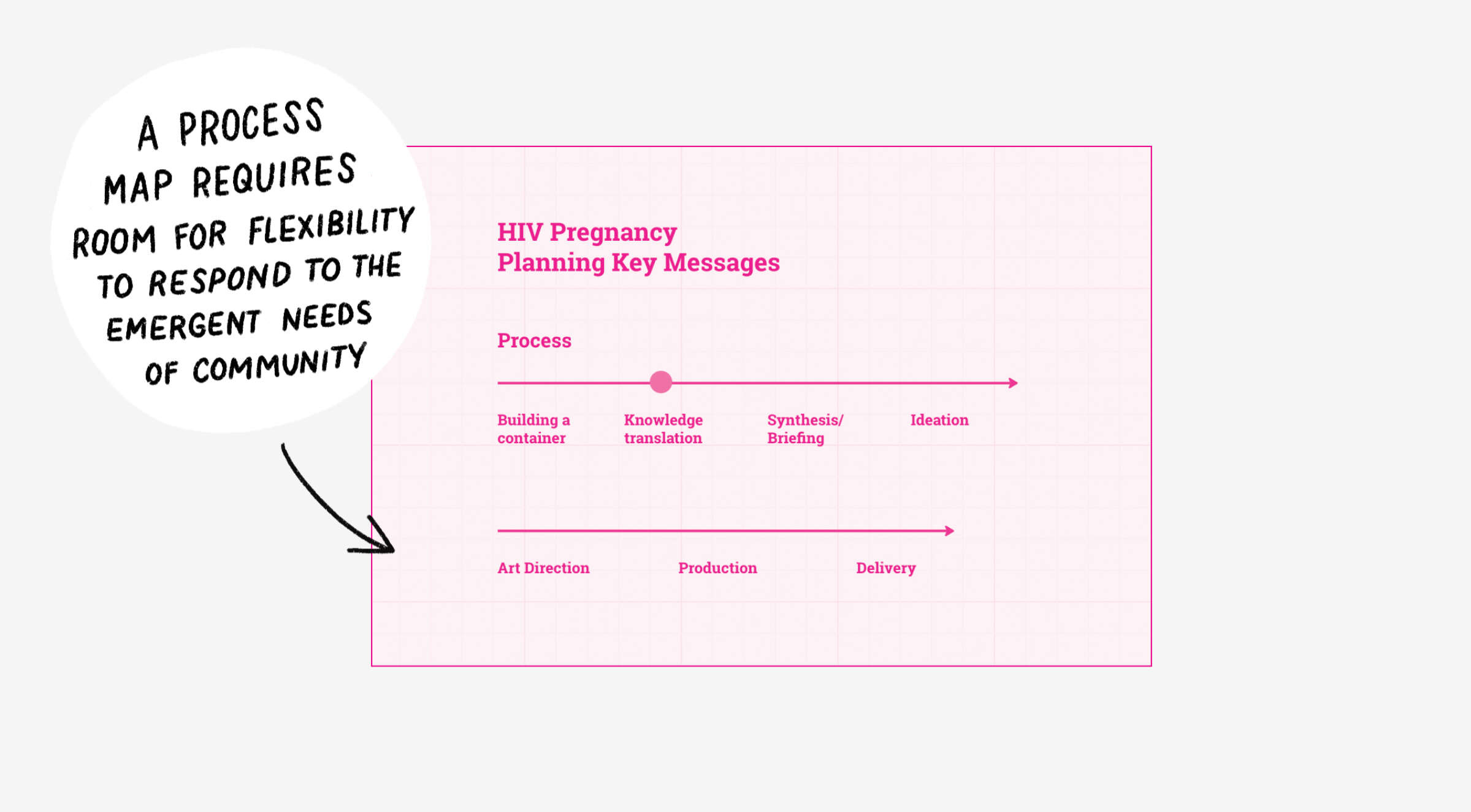
Building a container
We started our co-design process with an introductory session. After we moved through an introduction from the Women and HIV Research Program team, and an introduction to the studio and our values, we grounded the sessions with an in-depth land reflection.
Land reflections in these processes are opportunities to think critically about both the process and outcomes of our work together, and, in this case, need to explicitly name and challenge the ways in which Indigenous people across Turtle Island are disproportionately impacted by both HIV and reproductive injustice; face extreme barriers to culturally competent and holistic health care; and are consistently erased from dominant narratives within HIV activist movements. As a group assembled of Indigenous and non-Indigenous people, we opened with an invitation to a collective discussion on how we, through this process, can do things differently.
That discussion led to reflective introductions from the group, and the development of a respect agreement—a living basis of unity to which we can return throughout the ups and downs of the creative process together.
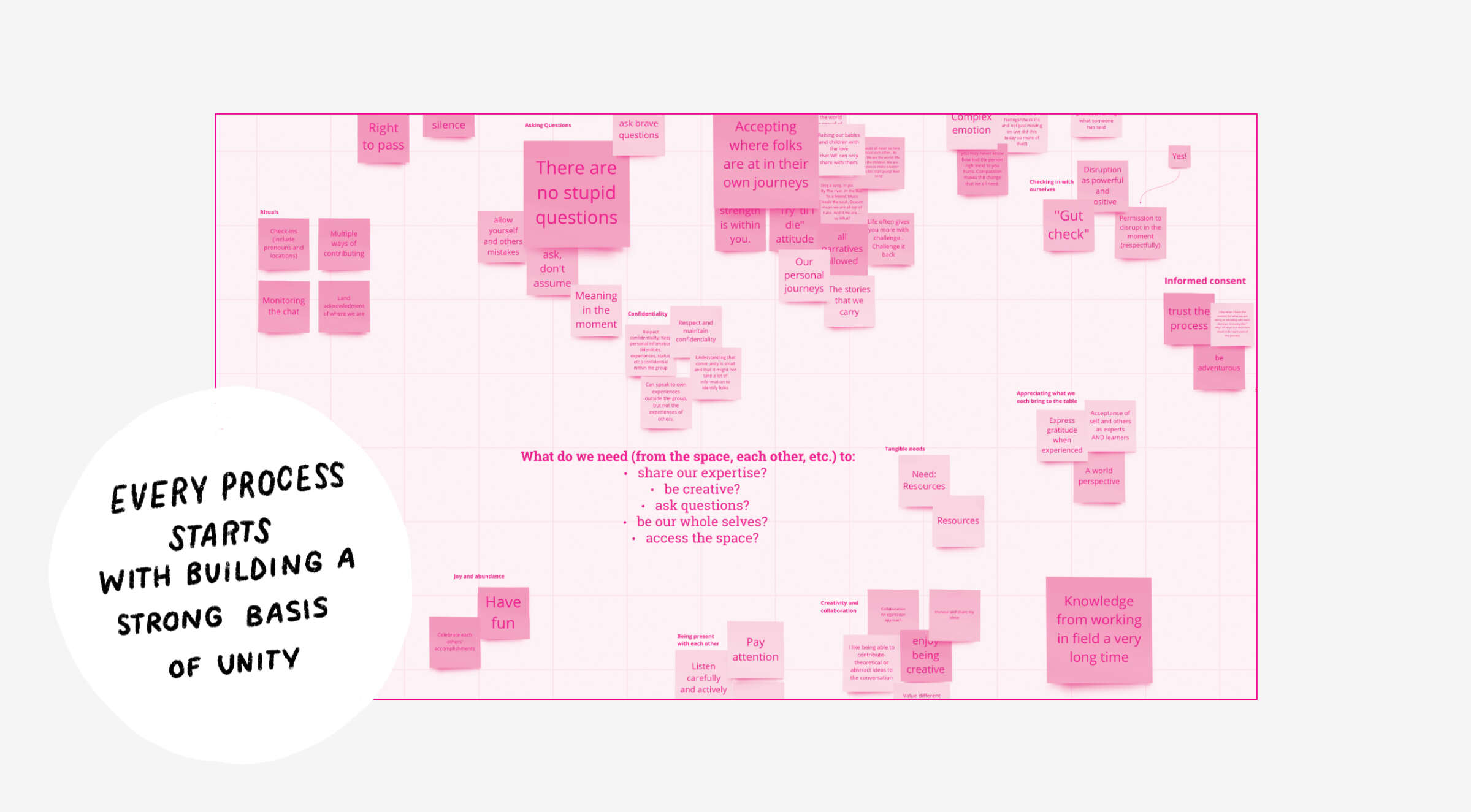
Mapping context
Before working through a strategy together, we took some time and space to map out the context of this work. What experiences and expertise is the group bringing to the table? What is the radical potential of this project? We started with some core questions:
- What do we wish we had known in our own journey?
- What are the limitations of the CHPPG? What key issues are not addressed?
- What barriers do we face in accessing information about “pregnancy planning”?
This discussion was layered and nuanced, and so many key insights and intentions emerged that could inform this project. Most significantly, we named that by limiting our community translation and mobilization work to the limits of the CHPPG (which focus on “pregnancy planning”) we might further compound the erasure of HIV-positive people who build families in different ways (eg. adoption, etc.), and the right to inclusive and non-judgemental reproductive care for people who choose to not have children (eg. abortion, etc.).
The other key piece that emerged from our workshop was that capacity-building for HIV community members needs to go hand-in-hand with both health-care providers and friends and family, because stigma in any of these spaces becomes a barrier to receiving inclusive care.
The group had a strong desire to expand the scope of our work together—to shift from “pregnancy planning” to one of reproductive justice, and to expand our audience beyond just community members, to include resources for providers, friends, and family. Thankfully, our partners at the Women and HIV Research Program were in full support of the group’s vision.
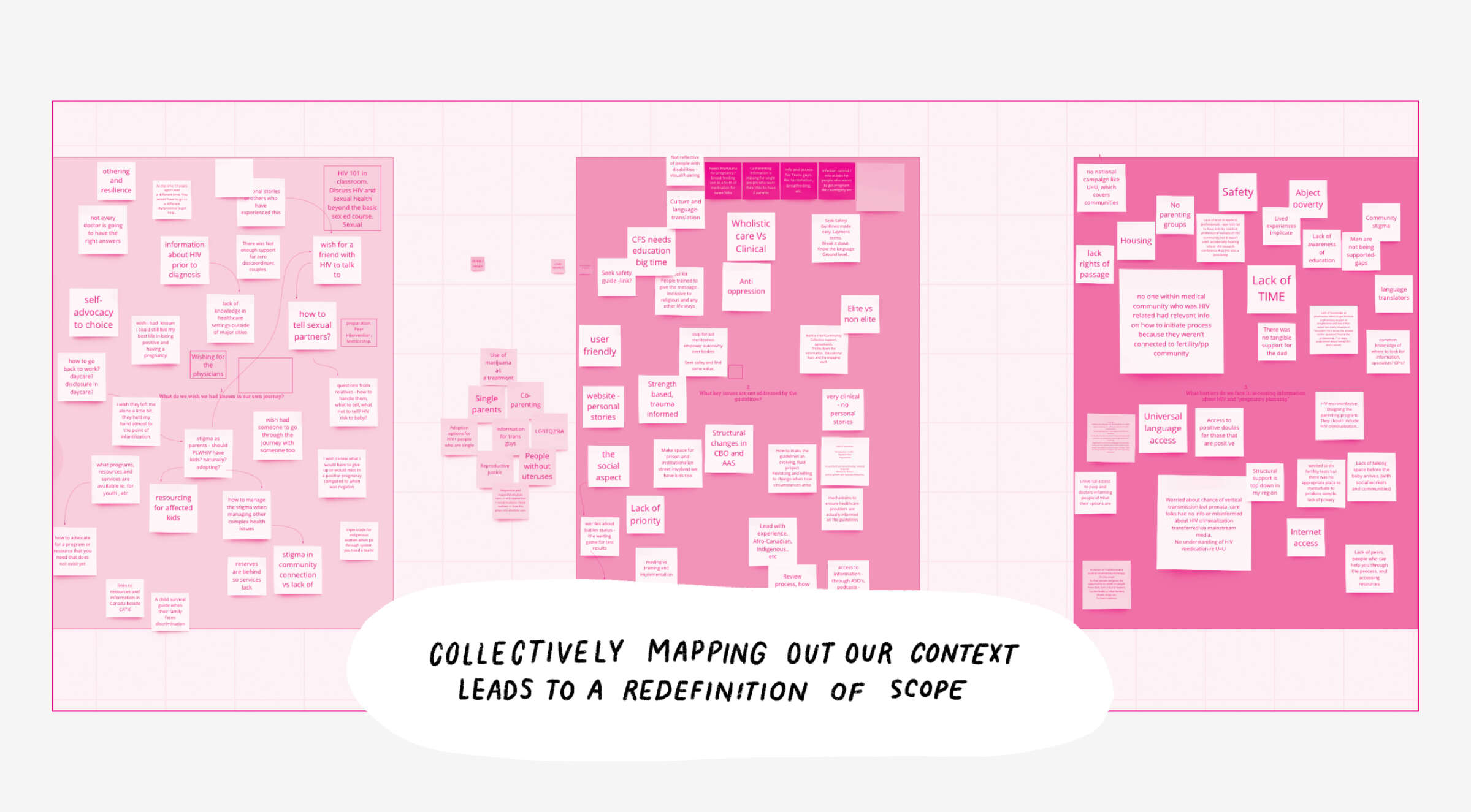
A co-authored brief
Informed by this context, we move forward to co-authoring a creative brief for our project. The creative brief forms the foundation of our visionary work together, and serves as a sandbox in which we can imagine, dream, iterate, and build together.
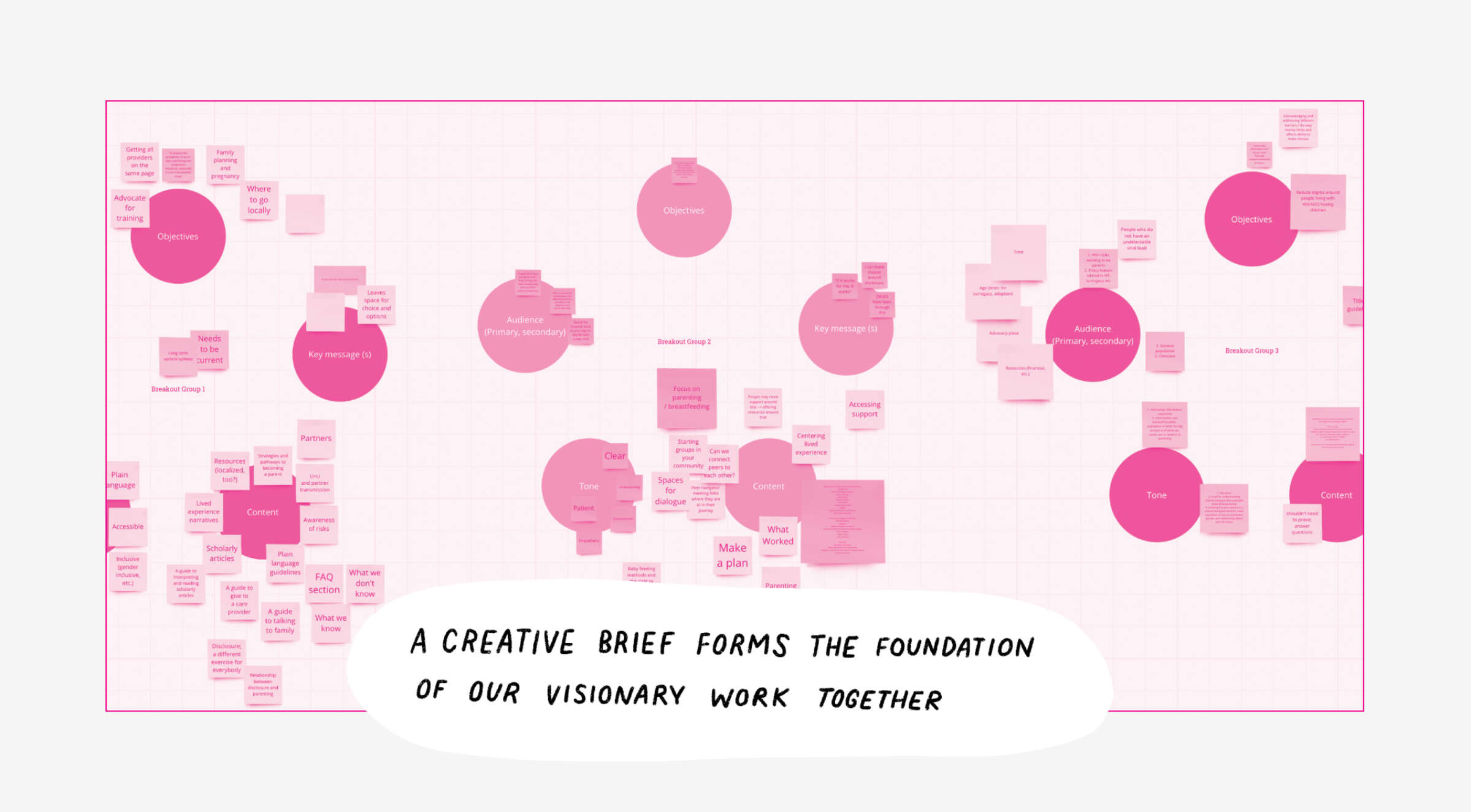
A pause
All our workshops together started with a check in and collective land reflection. Those reflections provide us with iterative spaces to build our collective knowledge with respect to decolonization and Indigenous sovereignty, and to respond, in real-time, to shifting personal and political contexts.
While we had planned to regroup to finalize our brief and begin creative exploration, our group was struck with deep and undeniable grief, stemming from the discovery of mass graves at former residential school sites across what’s now known as Canada. Rather than pushing ahead with our shared project, we held a virtual grieving space. Some folks opted out for self-care, and others stayed behind to assemble a resource list, and draft a letter template so we could write to our MPs calling for a reckoning and recommitment to the recommendations from the Truth and Reconciliation Commission.
Regrouping and reframing
After a pause and re-calibration of our process, we returned to start the brainstorming phase of the work. In light of our conversations and reflections, we committed to meaningfully weaving through the conversations of the last workshop into our creative work together.
In our brainstorms, we kept naming the limitations of so much public health work; it’s one thing to tell community members that they can and should receive holistic, affirming and comprehensive care—but when we fail to name the very real barriers that exist, we effectively download the responsibility of inclusion onto people who are marginalized; we set people up to fail, or be re-traumatized.
Together, we developed a creative direction that connects the personal to the systemic, and supports people living with HIV both directly as an audience category, and indirectly through networks of healthcare providers and friends and families.
Mapping content
With this framing, we imagined a comprehensive digital toolkit, with parallel pages for people living with HIV, friends and family of people living with HIV, and healthcare providers. Each would outline the context within which we are working, an overview of what this means for reproductive rights, and outline tangible paths to support people with HIV in building the families they want, on their own terms. The information, to be written by the group, would be woven through personal audio stories, anonymized, to demonstrate how this work is experienced across different social locations and geographies.
Content writing
Content was co-written by members of the group, in collaboration with the Women and HIV Research Program at Women’s College Hospital. All the writing went through multiple edits, with community members having final sign-off on everything published on the site.
The Work
The final work, viewable at hivparentingchoices.ca includes the website, illustrations, audio production and downloadable assets, and is the product of a process rooted in mutual care, accountability, intentionality and generative reciprocity. It is a visualization—a material representation—of community-building and radical imagination.
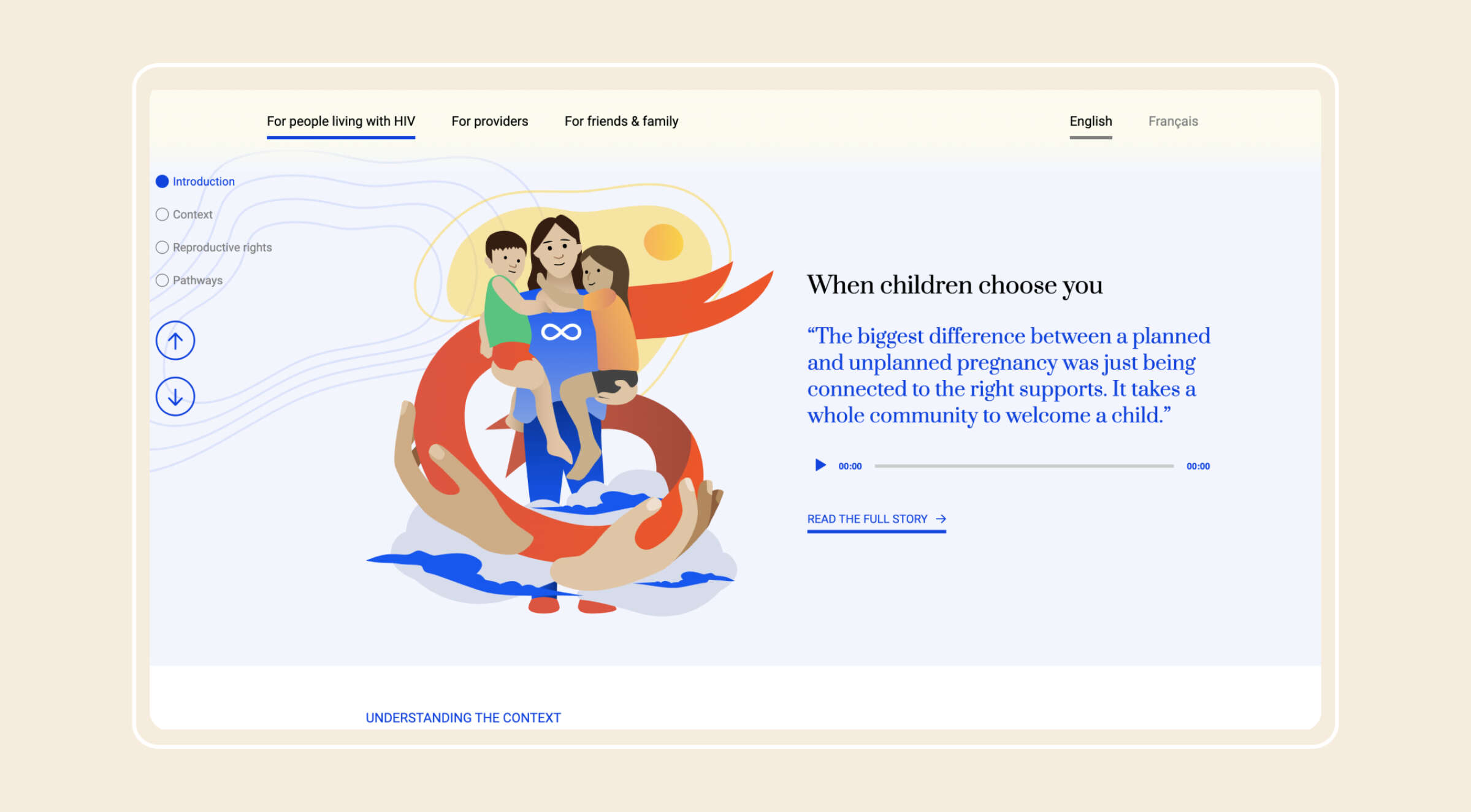
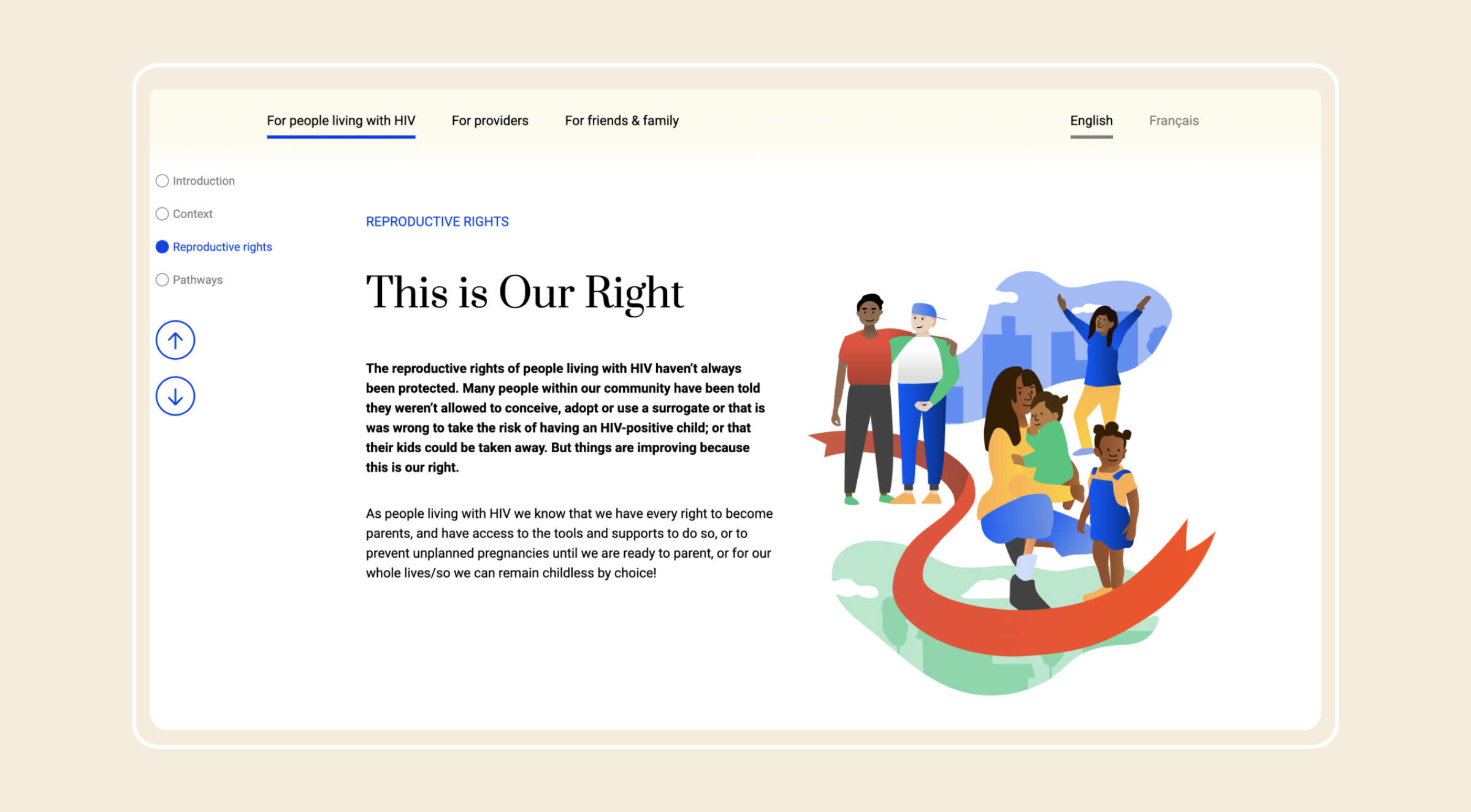

How do you want to change the world and how can we help?
Let’s Connect



